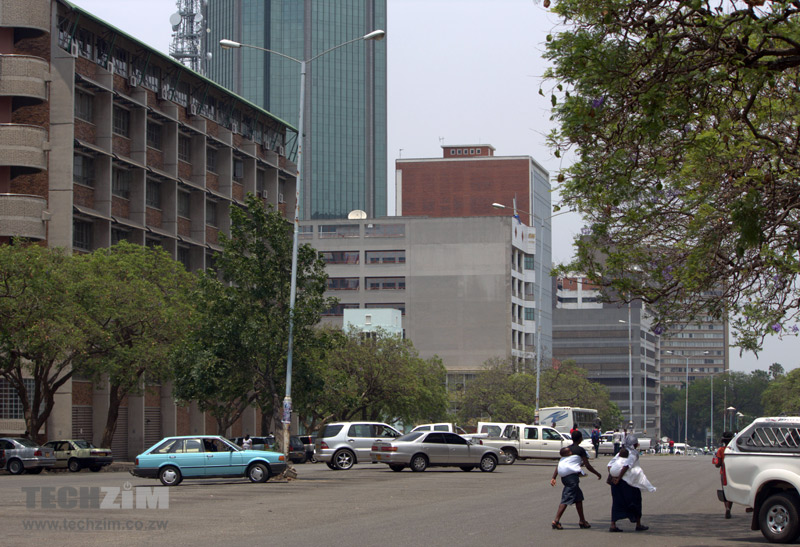From Monday, the 20th of June, 2016, RTGS payments in Zimbabwe will be conducted in multiple currencies while Zimbabwean banks will start issuing 8 other currencies in addition to the United States Dollar from the 1st of July 2016.
The Sunday Mail reports that the Reserve Bank of Zimbabwe confirmed that it had carried out tests in the past week in preparation for activation of muti-currency RTGS payments.
This comes as the country continues to look for short term solutions to a cash shortage which has made it difficult for Zimbabweans to withdraw money from their bank accounts and wallets.
So far, other measures that have been taken by the government include the reduction of bank charges to make electronic payments more appealing, a ban on certain imports, as well as the proposed introduction of bond notes later this year.
Zimbabwe switched to a multi-currency system in 2009 following a hyperinflationary period that was characterised by massive economic decline.
The other currencies which include the South African Rand, the Euro, the Chinese Yuan, the British pound, Botswana Pula, Australian dollar, Indian rupee and Japanese Yen have since then been accepted by several providers of retail and wholesale services.
However, they are often sidelined as there is an open preference for the United States dollar. It has become the default “local currency”, especially in the face of volatilities like the decline of the South African Rand which have been advantageous for the numerous import focused businesses.
Banks and other financial providers like mobile money services have also been conducting transactions using the United States Dollar.
Bandage solutions won’t fix the real problems
Despite assurances from a Central Bank that is in fire fighting mode, It doesn’t seem like Yuan or Rand withdrawals will improve the cash situation. In fact, this seems like another bandage solution that will just drag people down the path of foreign exchange rate nightmares.
The country’s liquidity challenges have been brought on by issues like a huge government expense sheet, a negative balance of payments (we import way more than we export) and limited local production.
Solutions like e-payments or a multi-currency push, high-flown, necessary and declarative as they might be, won’t fix any of these problems.

4 comments
You’re wrong. They will definitely fix the liquidity problems!
Because the USD is no longer the single trading currency in formal banking transactions, which was the case.
There are alot of formal & informal foreign currency cash inflows, the most frequent being from SA due to proximity and the population of Zimbabweans remitting money back home.
The availability of the USD in Zim had attracted alot of unbanked merchants that basically harvested it due to the ease of overpricing and availability.
Then there’s the matured Treasury bonds that Gvt had to now honour but had no revenue to back it, ultimately resulting in value being transferred around to honour payments…without backing of hard cash.
—
Now, this doesn’t solve the underlying socio-economic problems in Zim, but is a much better alternative to the sentiment-driven return of the black market through the return of the bond notes.
I can assure you that this absolutely will not fix the currency problems because it does not fix the underlying issues (why the currency crisis cropped up first) Zimbabwe is still basically a importing economy and a multi-currency regime is not going to fix that. The authorities need to stimulate the economy and make sure we narrow that deficit. Then there are irresponsible ad hoc budget measures, a civil wage bill we cannot afford which means the government will continue to somehow pursue a way to “print” money to finance this shortfall, a shrinking economy, a panicky public that will only accept USSD due to the current volatility of the Rand which is not being helped by the ANC’s own populist policies and incompetence, the complexity of maintaining a true multi-currency regime means certain places only effectively accept one currency for example even certain regions of Britain (The Republic) are in the EU they basically use the pound even though the Euro is the official currency.
@Tinman, absolutely. I could be wrong about how all this plays out. This solution, just like the move to an e-driven financial services sector does have the potential to lessen the liquidity pressures. However, this doesn’t take away the fact that it can only take us so far. The major causes of the crisis are still not being addressed and all the solutions that have been brought forward (they all should have been adopted ages ago by the way, except the bond notes) don’t do that. The ban of a long list of imports could probably be the first major move that has been made but it is also exposed to the flagrant corrupt practices that could derail it.
Overall, when it’s come to this crisis, the symptoms have been addressed but the real causes of illness aren’t being dealt with. That shouldn’t be the habit, especially when we are dealing with a fragile economy.
You see any currency should be backed up by reserves in gold form or fx. the central bank has nothing so these movements from dollar to rand are not the issue – the issue is fx reserves – imports being less than exports. revamp the economy – southerton used to be an industrial hub where is it . Bulawayo used to be an industrial hub where is it. simple A level economics will tell you that without reserves to back up your daily chores you are as good as dead.